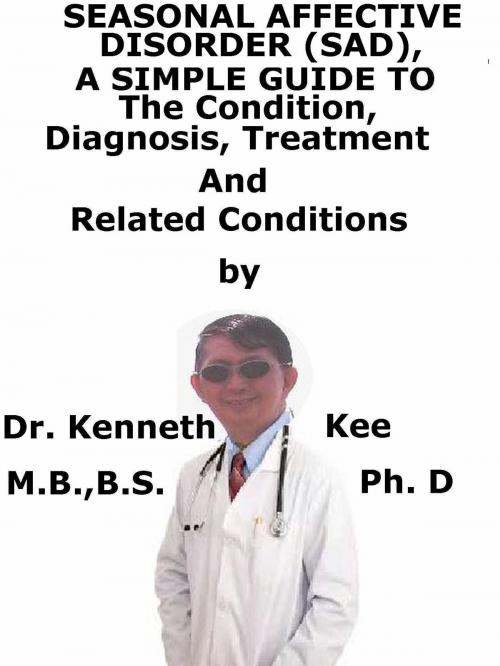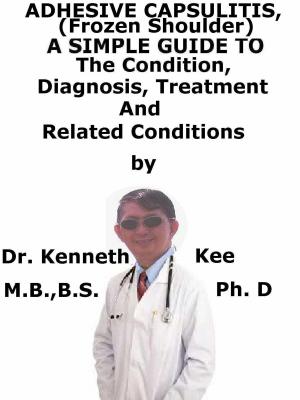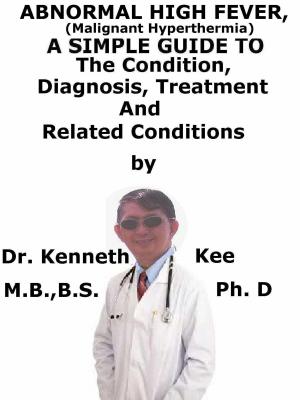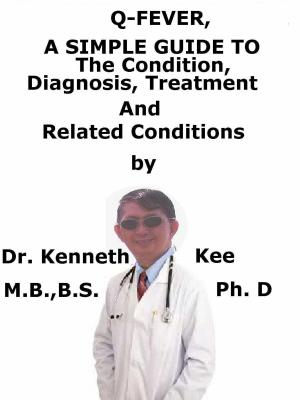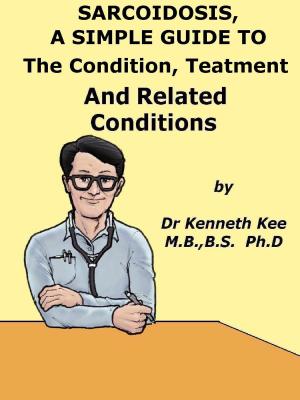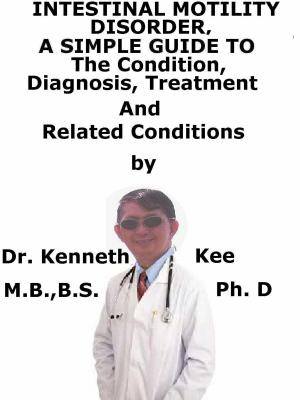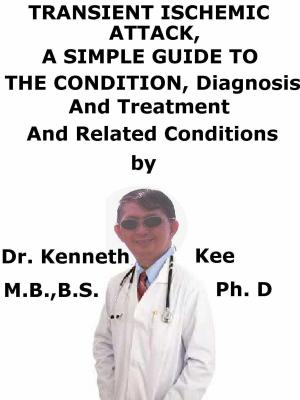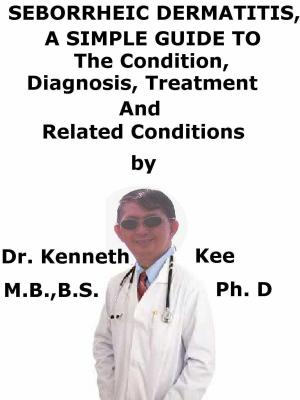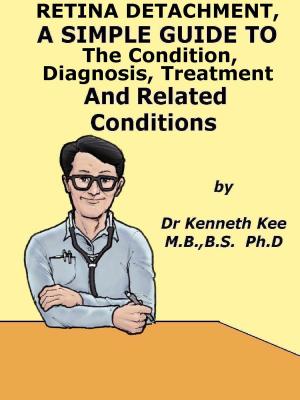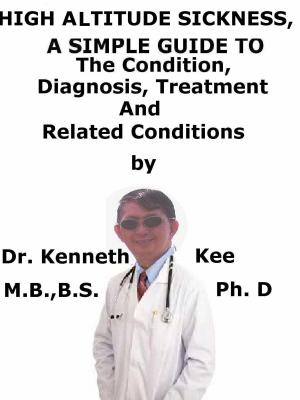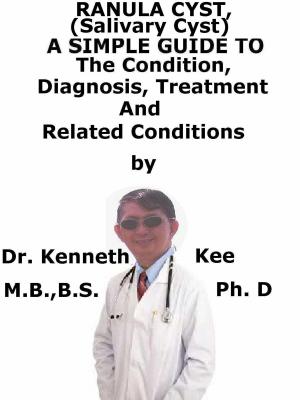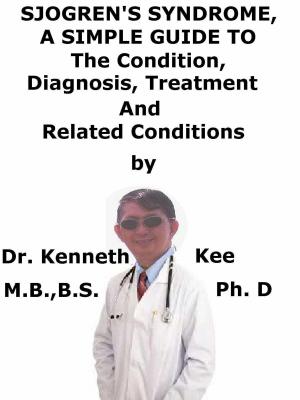Seasonal Affective Disorder (SAD), A Simple Guide To The Condition, Diagnosis, Treatment And Related Conditions
Nonfiction, Health & Well Being, Medical, Specialties, Psychiatry, Psychology| Author: | Kenneth Kee | ISBN: | 9781370574032 |
| Publisher: | Kenneth Kee | Publication: | February 10, 2017 |
| Imprint: | Smashwords Edition | Language: | English |
| Author: | Kenneth Kee |
| ISBN: | 9781370574032 |
| Publisher: | Kenneth Kee |
| Publication: | February 10, 2017 |
| Imprint: | Smashwords Edition |
| Language: | English |
Seasonal affective disorder (SAD) is a form of medical depression that happens at a certain time of the year, normally in winter.
It is believed that shorter days and less daylight may activate a chemical alteration in the brain resulting in symptoms of depression.
SAD may start during the teen years or in adulthood.
Like other types of depression, it happens more often in women than in men.
People who live in places with long winter nights are at increased danger of developing SAD.
A less frequent form of the disorder affects depression during the summer months.
There are two forms of SAD:
Fall-onset
This is also termed "winter depression."
Symptoms of depression start in the late fall to early winter months and become less frequent during the summer months.
Spring-onset
This is also termed "summer depression."
Symptoms of depression start in late spring to early summer.
This form is much less frequent.
Symptoms normally increase slowly in the late autumn and winter months.
Symptoms are often similar to other forms of depression:
1. Hopelessness
2. Higher appetite with weight gain (weight loss is more frequent with other forms of depression)
3. Increased sleep (too little sleep is more frequent with other forms of depression) and daytime drowsiness
4. Less energy and ability to concentrate
5. Loss of interest in work and pleasure in activities previously enjoyed
6. Sluggish movements
7. Social withdrawal and increased sensitivity to rejection
8. Unhappiness
There is no special diagnostic test for SAD.
The doctor can make a diagnosis based on the history of symptoms.
Depression often occurs with other disorders, such as heart disease or cancer.
It may also occur with other mood disorders, such as substance abuse or anxiety.
Therefore, early diagnosis and treatment is important to recovery
Treatment
Just like other forms of depression, antidepressant medicines and talk therapy can be efficacious.
Treating the Depression at Home
1. Get adequate sleep.
2. Eat healthy, well-balanced meals.
3. Take medicines correctly.
4. Learn to observe for early signs that the depression is getting worse.
5. Exercise more frequently.
6. Avoid alcohol or illegal drugs.
7. When the patient is fighting the depression, discuss about how the patient is feeling with someone the patient trusts.
8. Do not do too many things at one time.
9. Do things that help the patient feel better mentally
10. Anticipate the mood to get better slowly, not right away.
Light Therapy
Light therapy makes use of a special lamp with a very bright light that imitates light from the sun:
1. Treatment is begun in the fall or early winter, before the symptoms of SAD begin.
2. The doctor's instructions should be followed about how to use light therapy.
Exposure to sunlight
Spending time outside or near a window can help alleviate symptoms.
Psychotherapy
Cognitive-behavioral or interpersonal therapy assists to change the distorted ideas other people may have of the patient and the environment around him or her.
Antidepressants
These prescription medicines can help correct the chemical imbalance that may result in SAD.
The outlook is normally good with treatment.
But some people have SAD all their lives.
TABLE OF CONTENT
Introduction
Chapter 1 Seasonal Affective Disorder
Chapter 2 Causes
Chapter 3 Symptoms
Chapter 4 Diagnosis
Chapter 5 Treatment
Chapter 6 Prognosis
Chapter 7 Clinical Depression
Chapter 8 Bipolar Disorder
Epilogue
Refer Clinical Depression in Chapter 7 below for more details on Depression.
Seasonal affective disorder (SAD) is a form of medical depression that happens at a certain time of the year, normally in winter.
It is believed that shorter days and less daylight may activate a chemical alteration in the brain resulting in symptoms of depression.
SAD may start during the teen years or in adulthood.
Like other types of depression, it happens more often in women than in men.
People who live in places with long winter nights are at increased danger of developing SAD.
A less frequent form of the disorder affects depression during the summer months.
There are two forms of SAD:
Fall-onset
This is also termed "winter depression."
Symptoms of depression start in the late fall to early winter months and become less frequent during the summer months.
Spring-onset
This is also termed "summer depression."
Symptoms of depression start in late spring to early summer.
This form is much less frequent.
Symptoms normally increase slowly in the late autumn and winter months.
Symptoms are often similar to other forms of depression:
1. Hopelessness
2. Higher appetite with weight gain (weight loss is more frequent with other forms of depression)
3. Increased sleep (too little sleep is more frequent with other forms of depression) and daytime drowsiness
4. Less energy and ability to concentrate
5. Loss of interest in work and pleasure in activities previously enjoyed
6. Sluggish movements
7. Social withdrawal and increased sensitivity to rejection
8. Unhappiness
There is no special diagnostic test for SAD.
The doctor can make a diagnosis based on the history of symptoms.
Depression often occurs with other disorders, such as heart disease or cancer.
It may also occur with other mood disorders, such as substance abuse or anxiety.
Therefore, early diagnosis and treatment is important to recovery
Treatment
Just like other forms of depression, antidepressant medicines and talk therapy can be efficacious.
Treating the Depression at Home
1. Get adequate sleep.
2. Eat healthy, well-balanced meals.
3. Take medicines correctly.
4. Learn to observe for early signs that the depression is getting worse.
5. Exercise more frequently.
6. Avoid alcohol or illegal drugs.
7. When the patient is fighting the depression, discuss about how the patient is feeling with someone the patient trusts.
8. Do not do too many things at one time.
9. Do things that help the patient feel better mentally
10. Anticipate the mood to get better slowly, not right away.
Light Therapy
Light therapy makes use of a special lamp with a very bright light that imitates light from the sun:
1. Treatment is begun in the fall or early winter, before the symptoms of SAD begin.
2. The doctor's instructions should be followed about how to use light therapy.
Exposure to sunlight
Spending time outside or near a window can help alleviate symptoms.
Psychotherapy
Cognitive-behavioral or interpersonal therapy assists to change the distorted ideas other people may have of the patient and the environment around him or her.
Antidepressants
These prescription medicines can help correct the chemical imbalance that may result in SAD.
The outlook is normally good with treatment.
But some people have SAD all their lives.
TABLE OF CONTENT
Introduction
Chapter 1 Seasonal Affective Disorder
Chapter 2 Causes
Chapter 3 Symptoms
Chapter 4 Diagnosis
Chapter 5 Treatment
Chapter 6 Prognosis
Chapter 7 Clinical Depression
Chapter 8 Bipolar Disorder
Epilogue
Refer Clinical Depression in Chapter 7 below for more details on Depression.
